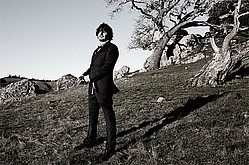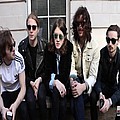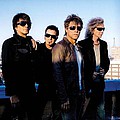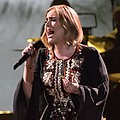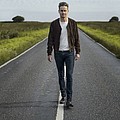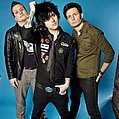Nightclub lasers and lights are one thing. These days, electronic music visuals are on a whole other level. Inspired by Daft Punk's now-iconic cube, artists have upped the production ante on their live shows, taking the DJ set out of the club and into the venue.
Deadmau5 travels with what he calls the "Expert Griefing Machine," a splay of Rubik's shapes, colored lights, and custom animation and video synched to the music. Skrillex has the "Skrillex Cell," which allows sky-high avatars of robots and skeletons to mimic his movements, using motion capture technology. Not since laser Pink Floyd at your local planetarium have musical experiences been this visually immersive.
But perhaps the most ambitious and complex of this year's traveling visual circuses is Amon Tobin's ISAM, a fully HD, 3-D mapping experience that brings Tobin's experimental electronic album of the same name to subtly stunning life. It continues its 15-date North American tour -- most of which is sold-out -- at California's Fox Theater on Saturday.
"Comparisons could be made to Deadmau5 and Daft Punk, who make electronic music and surround themselves with technology as they perform," says the soft-spoken Tobin. "But unlike that, ISAM doesn't focus on making people dance. It's not a DJ set where you're raving; it's a much more cinematic experience, and is more closely guided by a narrative, how the visuals and music work together."
Over the course of five months, Tobin and his label Ninja Tune assembled a team of visualists, technologists, and mad scientists to create the ISAM dreamscape.
The show features a shape-shifting DJ booth/projection wall/art installation designed by Heather Shaw of Vita Motus Design Studio, which also designed Coachella's Do Lab stage this year. Washes of high-definition colors, shapes, and video images stream and flush over the structure, triggered by Tomin in a storyboarded narrative mapped to the music in real-time. Longtime electronic music VJ Vello Virkhaus (V Squared Labs) and producer Matt Daly (Leviathan) collaborated on the visuals, and the boundary-breaking technology that made them possible.
The show premiered at the Mutek Festival in Montreal in June and caused an instant sensation. Media outlets like Wired and Fast Company have toasted its bleeding edge team, and other artists have even come calling for their own tours.
"Since the show's been on the road, there have been a lot of people trying to hire my crew for a lot more money," laughs Tobin. "The whole 3-D mapping thing hasn't really been explored that much, so a lot of people are jumping on that now."
While the show is nothing less than awe-inspiring, for Tobin, it's another means to his primary end: Getting more people to hear his first love, his music.
"The record isn't for everyone and I knew that from the start -- it's always been that way with me. But the show really is," says Tobin. "That's what's great about it. Whether people are into my stuff or not, they come to the show and have an awesome experience regardless. And then the hope is that there'll be some people who get more curious about the record itself. The show took five months to put together; the record took over two years. It's a really big part of my life. There are things happening on it that haven't happened before in my music; some moments I feel really proud of. So hopefully people get drawn into it from the visual aspect."
